
Trieste: The Crossroads of Cultures and History
Discover Trieste: A city where Italian charm meets Central European elegance, offering rich history, stunning architecture, and breathtaking coastal views.
Nestled between the Adriatic Sea and the Slovenian border, Trieste is a hidden gem in Italy's northeastern corner. This port city is rich in history and culture, making it a must-visit destination for any traveler. From its grand squares to its winding alleys, Trieste offers a unique blend of Italian, Slovenian, and Austrian influences. Start your journey at Piazza Unità d'Italia, one of Europe's largest sea-facing squares. Here, you can admire the stunning architecture of the Palazzo del Municipio and the historic Miramare Castle. Take a leisurely stroll along the waterfront promenade, where you can enjoy breathtaking views of the Adriatic Sea. Trieste is also a city of literature and coffee. It was once home to literary giants like James Joyce and Italo Svevo. Visit the historic Caffè San Marco, where you can sip on a perfect espresso while soaking in the intellectual atmosphere. Don't miss the city's many museums, such as the Revoltella Museum and the Museum of History and Art, which offer insights into Trieste's diverse heritage. For nature lovers, the Karst Plateau offers numerous hiking trails with panoramic views of the city and the sea. The Grotta Gigante, one of the world's largest tourist caves, is a marvel you must see. Whether you're here for the history, the culture, or the natural beauty, Trieste promises an unforgettable experience.
Local tips in Trieste
- Visit Piazza Unità d'Italia at sunset for stunning views and a vibrant atmosphere.
- Take a trip to Miramare Castle early in the morning to avoid the crowds.
- Explore the local coffee culture by visiting historic cafés like Caffè San Marco and Caffè Tommaseo.
- Wear comfortable shoes, as Trieste's streets are best explored on foot.
- Check the weather forecast before visiting the Karst Plateau for hiking.
- Purchase a FVG Card for discounted access to museums and public transportation.
Trieste: The Crossroads of Cultures and History
Nestled between the Adriatic Sea and the Slovenian border, Trieste is a hidden gem in Italy's northeastern corner. This port city is rich in history and culture, making it a must-visit destination for any traveler. From its grand squares to its winding alleys, Trieste offers a unique blend of Italian, Slovenian, and Austrian influences. Start your journey at Piazza Unità d'Italia, one of Europe's largest sea-facing squares. Here, you can admire the stunning architecture of the Palazzo del Municipio and the historic Miramare Castle. Take a leisurely stroll along the waterfront promenade, where you can enjoy breathtaking views of the Adriatic Sea. Trieste is also a city of literature and coffee. It was once home to literary giants like James Joyce and Italo Svevo. Visit the historic Caffè San Marco, where you can sip on a perfect espresso while soaking in the intellectual atmosphere. Don't miss the city's many museums, such as the Revoltella Museum and the Museum of History and Art, which offer insights into Trieste's diverse heritage. For nature lovers, the Karst Plateau offers numerous hiking trails with panoramic views of the city and the sea. The Grotta Gigante, one of the world's largest tourist caves, is a marvel you must see. Whether you're here for the history, the culture, or the natural beauty, Trieste promises an unforgettable experience.
When is the best time to go to Trieste?
Iconic landmarks you can’t miss
Unity of Italy Square
Discover the charm of Unity of Italy Square, a historical landmark in Trieste boasting stunning architecture and vibrant local culture.

Castello di San Giusto
Experience history and breathtaking views at Castello di San Giusto, a majestic fortress overlooking Trieste and the Adriatic Sea.
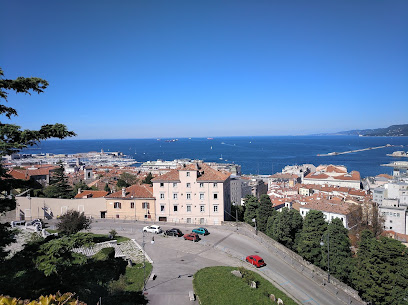
Cattedrale di San Giusto Martire
Discover the architectural splendor of Cattedrale di San Giusto Martire, a historic gem in Trieste showcasing stunning mosaics and breathtaking views.

Victory Lighthouse
Discover the beauty and history of the Victory Lighthouse in Trieste, a stunning landmark that honors naval valor and offers breathtaking sea views.

Giants' Stairway
Discover the breathtaking Giants' Stairway in Trieste, a historical landmark that showcases stunning architecture and panoramic views of the city.

Arco di Riccardo
Explore the Arco di Riccardo, a stunning historical landmark in Trieste that embodies the city's rich Roman heritage and vibrant atmosphere.
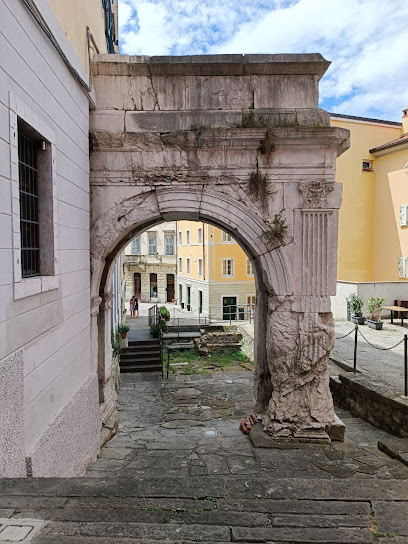
Statue of Italo Svevo
Discover the literary legacy of Italy at the Statue of Italo Svevo, a beautiful landmark in the heart of Trieste's vibrant Piazza Attilio Hortis.

Fountain of the Four Continents
Discover the beauty and cultural significance of the Fountain of the Four Continents in Trieste, an iconic symbol of unity and artistry.

Trieste War Memorial
Explore the Trieste War Memorial, a serene tribute to valor in the heart of Parco della Rimembranza, offering stunning views and a peaceful retreat.
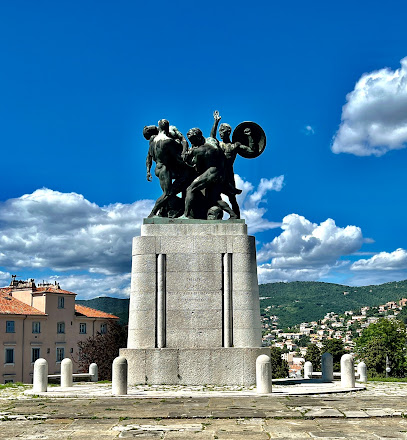
Fountain of the Tritons
Discover the enchanting Fountain of the Tritons in Trieste, where art, history, and serene ambiance unite in a picturesque setting.

Le Ragazze di Trieste
Explore Le Ragazze di Trieste, a beautiful memorial honoring women's contributions to maritime history, set against stunning Adriatic views.

Lapidario Tergestino
Explore Lapidario Tergestino, Trieste's hidden art museum filled with captivating Roman stone carvings and rich historical narratives.

St. Justus Castle
Discover the historic St. Justus Castle in Trieste, a majestic fortress offering stunning views and a fascinating glimpse into the region's rich past.

Monument to Austro-Hungarian 97th Regiment - Home base Trieste - WWI
Explore Trieste's rich history at the Monument to the Austro-Hungarian 97th Regiment, a poignant reminder of valor and sacrifice during WWI.

Trieste city
Explore Trieste, Italy's coastal jewel, where history meets stunning landscapes and a rich tapestry of cultures awaits every traveler.

Unmissable attractions to see
Unity of Italy Square
Discover the grandeur of Unity of Italy Square in Trieste, a historical landmark offering stunning architecture and vibrant coastal views.

Postojna Cave
Discover the breathtaking underground world of Postojna Cave, Slovenia’s gem of natural beauty and geological wonder.
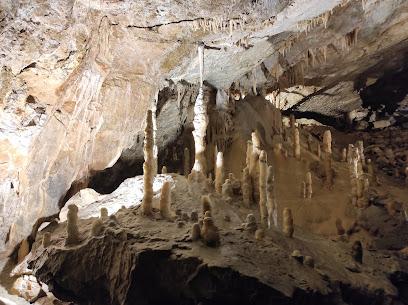
Miramare Castle
Explore the stunning Miramare Castle in Trieste, a historical masterpiece surrounded by lush gardens and breathtaking Adriatic views.

Predjama Castle
Discover the breathtaking beauty and rich history of Predjama Castle, Slovenia's stunning fortress built into the cliffs.

Skocjan Caves
Discover the breathtaking beauty of Skocjan Caves, a UNESCO World Heritage site in Slovenia, featuring stunning limestone formations and a unique underground ecosystem.
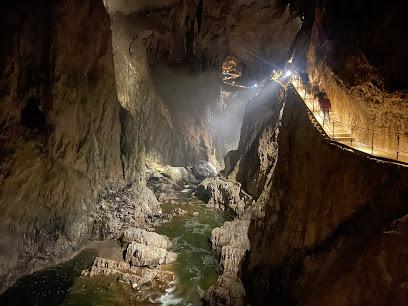
Jama - Grotta Baredine
Discover the breathtaking beauty of Jama - Grotta Baredine, a stunning underground cave system in Nova Vas, Croatia, rich in geological wonders and history.

Grotta Gigante
Experience the breathtaking beauty of Grotta Gigante, one of the largest caves in the world, just outside Trieste. A must-visit for nature enthusiasts!

Basilica di Santa Maria Assunta
Explore the breathtaking Basilica di Santa Maria Assunta, a UNESCO World Heritage Site rich in history and stunning mosaics, in the charming town of Aquileia.

Pinewood of Barcola
Explore the serene beauty of Pinewood of Barcola, a lush park offering stunning sea views and tranquil walking paths in Trieste.

Duino Castle / Devinski Grad
Explore the majestic Duino Castle, a historic fortress with stunning views, rich culture, and beautiful gardens along the Adriatic coast of Italy.
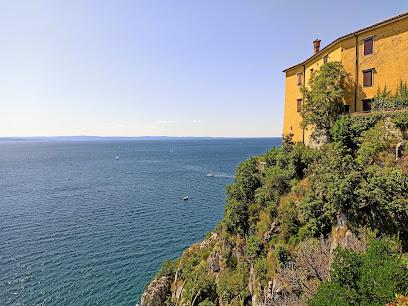
San Sabba Rice Mill National Monument and Museum
Discover the impactful history and serene ambiance of the San Sabba Rice Mill National Monument and Museum, a tribute to resilience and remembrance in Trieste.

Castello di San Giusto
Explore Castello di San Giusto in Trieste - a historical fortress with breathtaking views, rich heritage, and an unforgettable journey through time.

Canal Grande
Explore the enchanting Canal Grande in Trieste, a picturesque waterway surrounded by stunning architecture and vibrant local culture.

Roman Theatre of Trieste
Explore the breathtaking Roman Theatre of Trieste, an ancient amphitheater showcasing the city's rich history and stunning architecture.

Euphrasian Basilica
Discover the stunning Euphrasian Basilica in Poreč, a UNESCO World Heritage Site rich in Byzantine history and exquisite mosaics.

Essential places to dine
Trattoria Da Giovanni
Experience authentic Italian flavors at Trattoria Da Giovanni in Trieste—where every meal is a celebration of tradition and taste.

Caffè Tommaseo
Discover Caffè Tommaseo: An iconic restaurant in Trieste offering exquisite Italian cuisine amidst rich history and vibrant culture.

Suban
Experience exquisite Italian cuisine at Suban in Trieste - where elegance meets culinary excellence.

Antico Spazzacamino
Discover authentic seafood cuisine at Antico Spazzacamino, where every dish celebrates Trieste's rich culinary heritage.

Osteria Marise
Discover the flavors of Italy at Osteria Marise, where fresh seafood meets authentic culinary traditions in the heart of Trieste.

Trattoria Nerodiseppia
Discover Trattoria Nerodiseppia in Trieste – where fresh seafood meets authentic Italian tradition in a cozy seaside atmosphere.
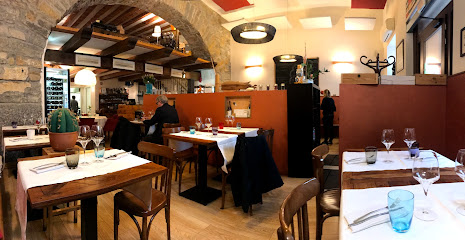
Trapizzino Trieste
Experience authentic Roman street food at Trapizzino Trieste, where tradition meets innovation in every delicious bite.

Buffet Clai
Experience Trieste's finest buffet with fresh Mediterranean flavors at Buffet Clai – where culinary delights await every visitor.

Joia
Experience the best seafood in Trieste at Joia - where fresh flavors meet family-friendly dining.

Menarosti
Experience the best of Italian seafood at Menarosti in Trieste – where every dish is crafted with passion and freshness.

Trattoria Mara
Discover authentic Italian cuisine at Trattoria Mara in Trieste—where every meal is a celebration of local flavors and traditions.

Chimera di Bacco
Experience authentic Italian cuisine at Chimera di Bacco in Trieste; where tradition meets flavor in an elegant dining atmosphere.
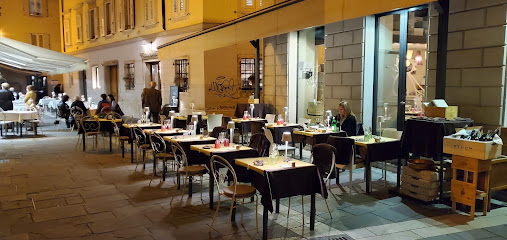
Rustiko
Discover authentic Italian flavors at Rustiko in Trieste – a charming restaurant and deli offering fresh local cuisine in an inviting atmosphere.

Osteria Salvagente
Experience authentic Mediterranean flavors at Osteria Salvagente in Trieste, where Italian and seafood dishes come together in a cozy atmosphere.
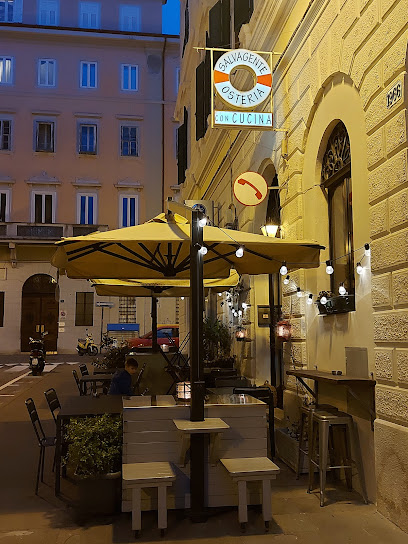
Bracerie Venete
Discover authentic Italian cuisine at Bracerie Venete in Trieste – where tradition meets taste in an inviting atmosphere.

Markets, malls and hidden boutiques
Torri D'Europa
Discover the vibrant Torri D'Europa shopping mall in Trieste, where fashion meets fun for the whole family.
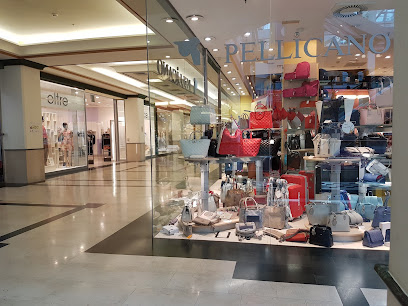
Il Giulia
Explore the vibrant Il Giulia shopping mall in Trieste, featuring diverse shops, delightful dining, and a unique shopping experience.
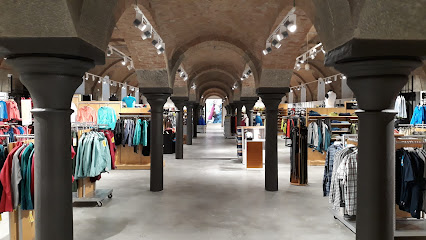
Flying Tiger Copenhagen
Explore the whimsical world of Flying Tiger Copenhagen in Trieste, a vibrant gift shop filled with unique home goods, stationery, and toys for all ages.

COIN EXCELSIOR
Explore Trieste's top fashion destination at COIN EXCELSIOR, featuring clothing, cosmetics, and accessories for every style and occasion.
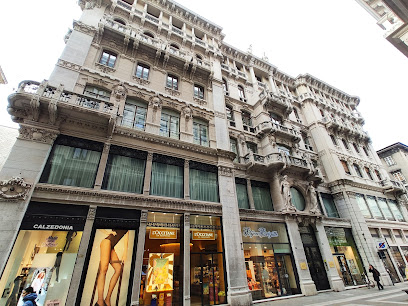
Upim
Discover a shopping paradise at Upim in Trieste, where fashion meets affordability for every traveler.

Corner
Discover the essence of Italian fashion at Corner, Trieste's premier clothing store, blending local charm with modern styles.

Foot Locker
Discover the latest footwear trends at Foot Locker in Trieste, where style meets comfort in a vibrant shopping atmosphere.

Stradivarius
Explore the latest fashion trends at Stradivarius in Trieste, a stylish destination for women's clothing and accessories.

Barazzoni factory store Trieste
Explore the Barazzoni Factory Store in Trieste for exquisite Italian home goods and cookware, a perfect blend of quality and design.

Ruski Dom
Explore Ruski Dom in Trieste for a unique blend of Russian culture, gourmet goods, and exquisite crafts in a charming gift shop setting.
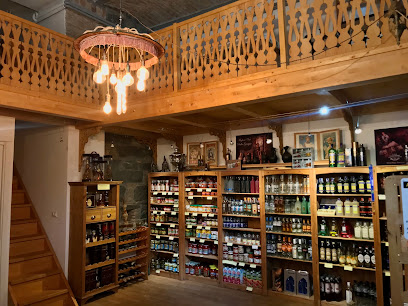
Galleria Rossoni
Discover Galleria Rossoni, Trieste's premier shopping mall, where luxury brands meet local charm in a stunning architectural setting.

La Bottega Incantata
Discover La Bottega Incantata in Trieste - a charming collectibles store with unique dresses and whimsical novelties that capture Italy's enchanting spirit.

L'erba Proibita Boutique
Explore L'erba Proibita Boutique in Trieste for a unique blend of cannabis products, cosmetics, and trendy youth clothing that captures the essence of modern Italian style.
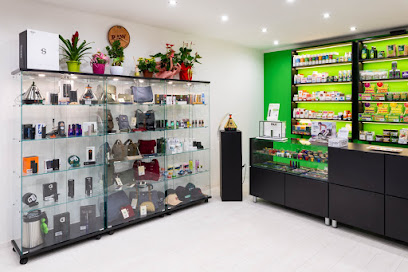
Dezen Dezen
Explore Dezen Dezen in Trieste for unique handcrafted fashion accessories and local handicrafts that embody the spirit of Italian artistry.

THUN Shop Trieste
Explore the enchanting THUN Shop in Trieste for unique gifts and exquisite Italian craftsmanship that celebrate the art of novelty.

Essential bars & hidden hideouts
Urbanis
Discover Urbanis in Trieste: A vibrant bar and café offering local delicacies and crafted drinks in a historic setting.

Mastro Birraio
Discover Mastro Birraio, Trieste's premier pub for unique beers and gourmet burgers, perfect for an unforgettable dining experience.

Draw
Discover Trieste's lively bistro bar, Draw, where local flavors meet a vibrant atmosphere perfect for unwinding.

coktail bar Trieste | La Preferita
Unwind at La Preferita, Trieste's premier cocktail bar, where expert mixology meets a vibrant atmosphere for an unforgettable night out.
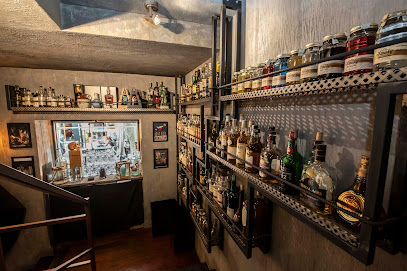
Al Ciketo
Discover Al Ciketo, a charming bar in Trieste known for its extensive drink menu and welcoming atmosphere, perfect for unwinding after a day of exploration.

Gran Malabar
Discover Trieste's charming Gran Malabar, a wine bar offering exquisite regional selections and a cozy ambiance for every wine enthusiast.

Gran Bar Unità
Experience the vibrant atmosphere and authentic flavors of Italy at Gran Bar Unità, Trieste's premier social hub.

Harry'S Bar Trieste
Experience the sophistication of Harry's Bar Trieste, where fine dining meets casual elegance in the heart of Italy.

Bar Portizza
Experience the charm of Trieste at Bar Portizza, a historical landmark offering exceptional coffee and pastries in the heart of the city.
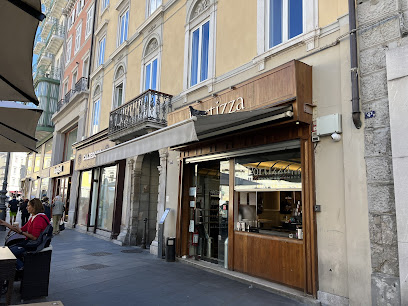
New Circus
Experience the essence of Trieste at New Circus, a charming bar and café offering delightful drinks and snacks in a cozy atmosphere.

Super Bar Stella
Discover the lively ambiance of Super Bar Stella in Trieste, where fine drinks and local culture meet in a cozy setting perfect for relaxation.

Mast
Experience the vibrant nightlife of Trieste at Mast, a trendy cocktail bar with expertly crafted drinks and a chic atmosphere.

Aqvedotto Caffè
Discover the vibrant atmosphere and delightful beverages at Aqvedotto Caffè, a must-visit bar in the heart of Trieste, Italy.

Mini Pub 2
Discover the vibrant flavors of Trieste at Mini Pub 2, where casual dining meets a lively pub atmosphere for an unforgettable experience.

Cool & Camisa
Discover Cool & Camisa in Trieste, where exceptional cocktails meet artisanal coffee in a stylish and inviting atmosphere.

Travel experiences inspired by this city
Explore more travel diariesLocal Phrases
-
- HelloCiao
[chow] - GoodbyeArrivederci
[ah-ree-veh-dehr-chee] - YesSì
[see] - NoNo
[noh] - Please/You're welcomePer favore/Prego
[pehr fa-voh-reh/preh-goh] - Thank youGrazie
[gra-tsyeh] - Excuse me/SorryMi scusi/Scusa
[mee skoo-zee/skoo-zah] - How are you?Come stai?
[koh-meh stai] - Fine. And you?Bene. E tu?
[beh-neh. eh too] - Do you speak English?Parli inglese?
[par-lee een-gleh-zeh] - I don't understandNon capisco
[non kah-pee-skoh]
- HelloCiao
-
- I'd like to see the menu, pleaseVorrei vedere il menù, per favore
[voh-reh-ee veh-deh-reh eel meh-noo, pehr fa-voh-reh] - I don't eat meatNon mangio carne
[non mah-njo kahr-neh] - Cheers!Salute!
[sah-loo-teh] - I would like to pay, pleaseVorrei pagare, per favore
[voh-reh-ee pah-gah-reh, pehr fa-voh-reh]
- I'd like to see the menu, pleaseVorrei vedere il menù, per favore
-
- Help!Aiuto!
[ah-yoo-toh] - Go away!Vai via!
[vah-ee vee-ah] - Call the Police!Chiama la polizia!
[kyah-mah lah poh-lee-tsya] - Call a doctor!Chiama un dottore!
[kyah-mah oon doh-toh-reh] - I'm lostMi sono perso
[mee soh-no pehr-soh] - I'm illMi sento male
[mee sehn-toh mah-leh]
- Help!Aiuto!
-
- I'd like to buy...Vorrei comprare...
[voh-reh-ee kohm-prah-reh] - I'm just lookingSto solo guardando
[stoh soh-loh gwar-dahn-doh] - How much is it?Quanto costa?
[kwan-toh koh-stah] - That's too expensiveÈ troppo caro
[eh troh-po kah-roh] - Can you lower the price?Puoi abbassare il prezzo?
[pwah-ee ahb-bah-sah-reh eel preh-tsoh]
- I'd like to buy...Vorrei comprare...
-
- What time is it?Che ora è?
[keh oh-rah eh] - It's one o'clockÈ l'una
[eh loo-nah] - Half past (10)Mezzo (10)
[meh-tsoh (deh-ee-chee)] - MorningMattina
[maht-tee-nah] - AfternoonPomeriggio
[poh-meh-ree-joh] - EveningSera
[seh-rah] - YesterdayIeri
[yeh-ree] - TodayOggi
[oh-jee] - TomorrowDomani
[doh-mah-nee] - 1Uno
[oo-noh] - 2Due
[doo-eh] - 3Tre
[treh] - 4Quattro
[kwah-troh] - 5Cinque
[cheen-kweh] - 6Sei
[seh-ee] - 7Sette
[seht-teh] - 8Otto
[oh-toh] - 9Nove
[noh-veh] - 10Dieci
[dee-eh-chee]
- What time is it?Che ora è?
-
- Where's a/the...?Dov'è un/il...?
[doh-veh oon/eel] - What's the address?Qual è l'indirizzo?
[kwal eh leen-dee-ree-tsoh] - Can you show me (on the map)?Puoi mostrarmi (sulla mappa)?
[pwah-ee moh-stahr-mee (sool-lah mahp-pah)] - When's the next (bus)?Quando passa il prossimo (autobus)?
[kwan-doh pahs-sah eel prohs-see-moh (ow-toh-boos)] - A ticket (to ....)Un biglietto (per ....)
[oon bee-lyet-toh (pehr)]
- Where's a/the...?Dov'è un/il...?
History of Trieste
-
Trieste's history dates back to prehistoric times, with evidence of settlement by the Histri tribe. The city's name originates from the Latin 'Tergeste,' which was established as a Roman colony in 33 BC. This strategic port city flourished under Roman rule, serving as a crucial maritime hub in the Adriatic Sea.
-
After the fall of the Western Roman Empire, Trieste came under the control of the Byzantine Empire. In the 8th century, it was conquered by the Franks under Charlemagne, becoming part of the Carolingian Empire. This period marked Trieste's integration into the broader European political and cultural landscape.
-
In 1382, Trieste voluntarily became part of the Habsburg Monarchy to protect itself from the Republic of Venice. This agreement allowed Trieste to retain a significant degree of autonomy, transforming it into a free port in 1719. The city's status as a free port attracted merchants and traders from across Europe, fostering a diverse and cosmopolitan environment.
-
Trieste briefly fell under French control during the Napoleonic Wars. From 1809 to 1813, it was part of the Illyrian Provinces, an administrative division of the French Empire. This period saw the introduction of French legal and administrative reforms, which influenced the city's subsequent development.
-
Following the Congress of Vienna in 1815, Trieste was returned to the Austrian Empire, later becoming a crucial port for the Austro-Hungarian Empire. The city experienced significant economic and demographic growth during the 19th century, becoming a major center for trade, shipbuilding, and insurance. Its multicultural population included Italians, Slovenians, Jews, Greeks, and other ethnic groups.
-
The outbreak of World War I brought turmoil to Trieste, which was heavily contested due to its strategic importance. Following the war and the dissolution of the Austro-Hungarian Empire, Trieste was annexed by Italy in 1918. The city's transition was marked by significant political and social changes, as well as tensions between different ethnic communities.
-
During World War II, Trieste was occupied by German forces from 1943 to 1945. After the war, the city became a focal point of Cold War tensions. In 1947, the Treaty of Paris established the Free Territory of Trieste, divided into two zones governed by the Allies and Yugoslavia. This arrangement lasted until 1954, when Trieste was officially returned to Italy.
-
Today, Trieste is a vibrant city known for its rich cultural heritage and historical significance. It is a leading center for scientific research, particularly in the fields of physics and oceanography. The city's unique blend of Italian, Austro-Hungarian, and Slavic influences is evident in its architecture, cuisine, and cultural traditions, making it a fascinating destination for travelers.
Trieste Essentials
-
Trieste is well-connected by air, rail, and road. The nearest airport is Trieste – Friuli Venezia Giulia Airport (TRS), located about 33 kilometers from the city center. From the airport, you can take a bus, taxi, or rent a car to reach Trieste. International travelers can also consider flying into Venice Marco Polo Airport (VCE) and then taking a train or bus to Trieste, which is approximately a two-hour journey. Trieste's central railway station, Stazione di Trieste Centrale, provides excellent connections to major Italian cities and neighboring countries. Additionally, Trieste is accessible via major highways if you are traveling by car.
-
Trieste boasts a reliable public transportation system, including buses and trams operated by Trieste Trasporti. Tickets can be purchased at newsstands, tobacco shops, or via the Trieste Trasporti app. For short distances, walking is a pleasant way to explore the city. Taxis are available but can be more expensive. Car rentals provide flexibility for day trips to nearby attractions. For a unique experience, consider taking the historic Opicina Tramway, which offers scenic views of the city and surrounding areas.
-
Italy uses the Euro (EUR) as its official currency. Credit and debit cards are widely accepted in hotels, restaurants, and shops. However, it is advisable to carry some cash for smaller establishments, market purchases, and tips. ATMs are readily available throughout the city. Currency exchange services can be found at banks and exchange offices, but it's often more economical to withdraw Euros directly from ATMs using your bank card.
-
Trieste is generally a safe city for tourists. However, like any urban area, it is important to remain vigilant, particularly in crowded places such as public transportation hubs, markets, and tourist attractions. Petty crimes like pickpocketing can occur. It is advisable to avoid the area around the central railway station late at night. Always keep an eye on your belongings and use hotel safes for valuables. Emergency contact numbers are essential to have on hand.
-
In case of emergency, dial 112, the European emergency number, for immediate assistance. Trieste has well-equipped hospitals and clinics, including the Ospedale Maggiore and the Cattinara Hospital. Pharmacies (Farmacia) are widespread and can provide over-the-counter medications. It is recommended to have travel insurance that covers medical emergencies. For police assistance, contact the local police station (Questura di Trieste).
-
Fashion: Do dress stylishly yet comfortably, as Italians take pride in their appearance. Avoid overly casual attire like flip-flops and beachwear when not at the beach. Religion: Do show respect when visiting religious sites by dressing modestly and maintaining a quiet demeanor. Public Transport: Do validate your bus or tram ticket upon boarding. Don’t speak loudly or eat on public transport. Greetings: Do greet people with a friendly 'Buongiorno' (Good morning) or 'Buonasera' (Good evening). A handshake is common. Eating & Drinking: Do try local dishes such as 'jota' (bean and sauerkraut soup) and 'boreto' (fish stew). Don’t rush your meals; Italians appreciate leisurely dining.
-
To experience Trieste like a local, start your day with a 'capo in B' (espresso with milk) at a historic café like Caffè San Marco. Explore the old city center, including the Roman Theatre and the Piazza Unità d'Italia, the largest sea-facing square in Europe. Take a stroll along the waterfront promenade and visit the Miramare Castle, a stunning 19th-century residence. For a taste of local life, head to the daily market at Piazza Sant'Antonio Nuovo. Don't miss the chance to hike the Karst Plateau or visit the Grotta Gigante, one of the world's largest accessible caves.
Trending Landmark in Trieste
-
Unity of Italy Square
-
Castello di San Giusto
-
Cattedrale di San Giusto Martire
-
Victory Lighthouse
-
Giants' Stairway
-
Arco di Riccardo
-
Statue of Italo Svevo
-
Fountain of the Four Continents
-
Trieste War Memorial
-
Fountain of the Tritons
-
Le Ragazze di Trieste
-
Lapidario Tergestino
-
St. Justus Castle
-
Monument to Austro-Hungarian 97th Regiment - Home base Trieste - WWI
-
Trieste city
Nearby Cities to Trieste
-
Things To Do in Sežana
-
Things To Do in Koper
-
Things To Do in Izola
-
Things To Do in Portorož
-
Things To Do in Piran
-
Things To Do in Nova Gorica
-
Things To Do in Postojna
-
Things To Do in Opatija
-
Things To Do in Rovinj
-
Things To Do in Bohinj
-
Things To Do in Škofja Loka
-
Things To Do in Ljubljana
-
Things To Do in Bled
-
Things To Do in Pula
-
Things To Do in Kamnik

















